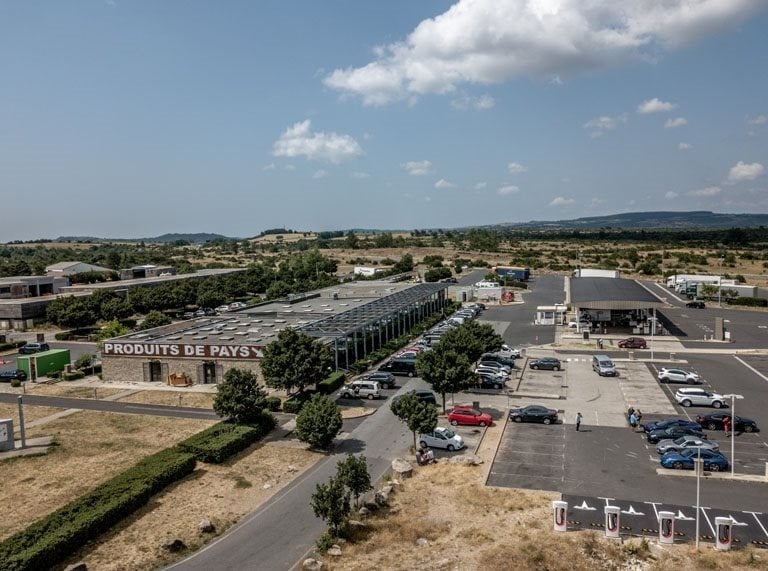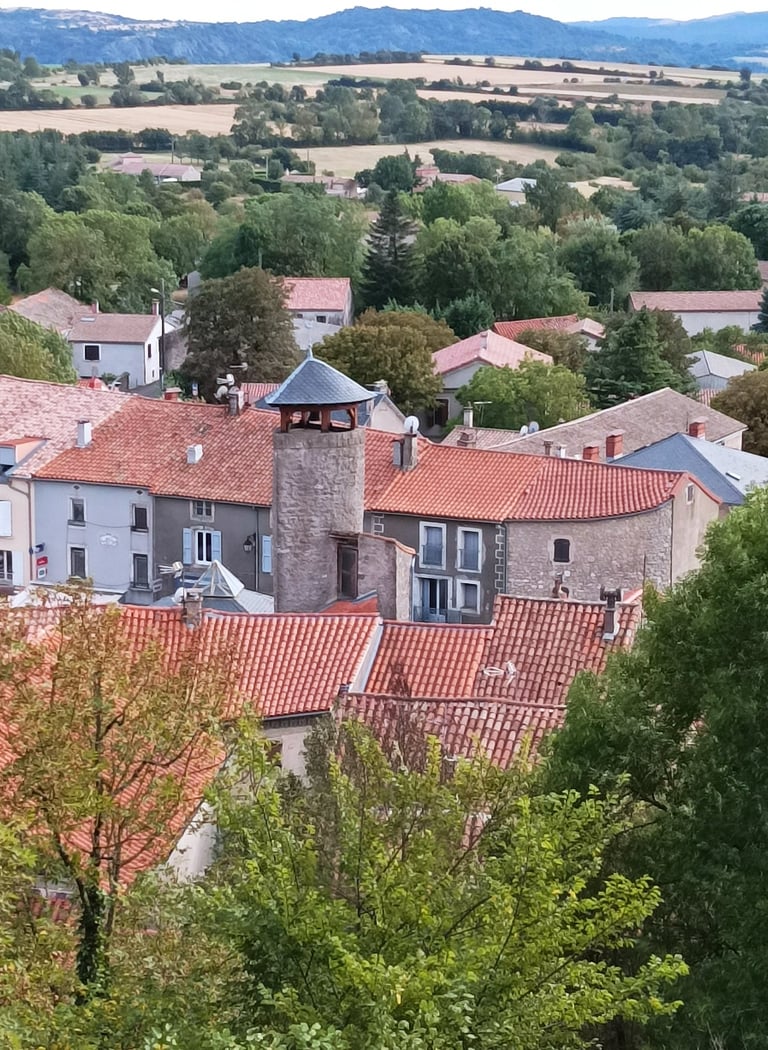
Where Two Worlds Meet
A visit to Le Caylar
BUILDINGS AND ARCHITECTURE TRAVEL THROUGH FRANCE
Joan
8/30/20234 min read
Yesterday we took a short drive to the historic village of Le Caylar which lies to the north of us on the Causses du Larzac . We took the route that winds up to the head of our valley, then traverses the plateau, with its low rocks and stunted trees. After the long dry summer the land was dry and brown and it felt just like crossing the vast empty landscape of The Karoo in South Africa. At Le Caylar we planned to see a different kind of bande dessinée(see my earlier blog.) Sadly our mission was thwarted , for reasons that will become clear. But nonetheless, Le Caylar proved to be a fascinating place that straddles the old and the new.
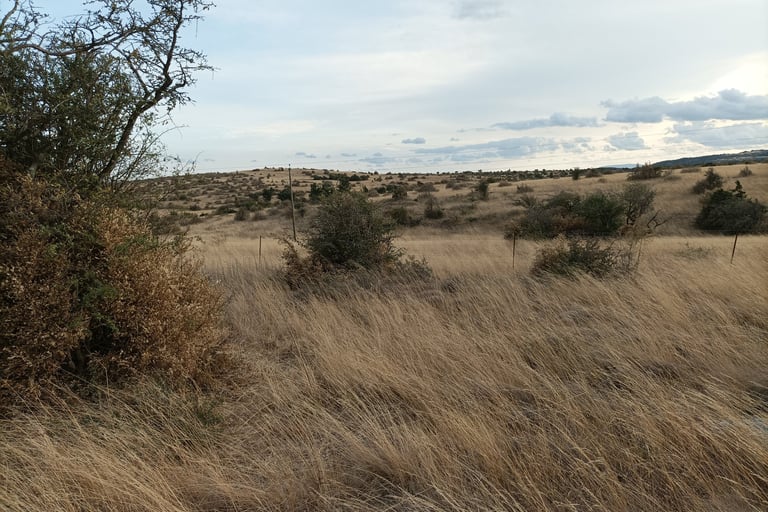

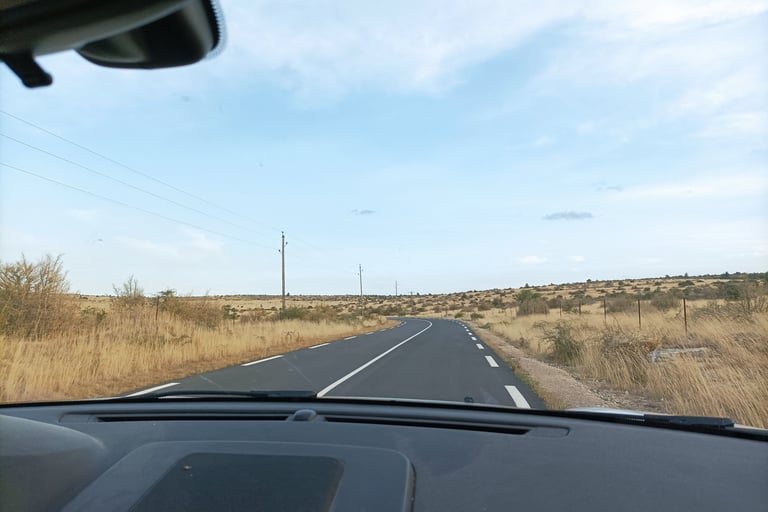

Whenever we visit Le Caylar we are usually passing straight through on a journey north. Today, we parked our car in the central 'place,' and set off to explore the village, which originated in neolithic times . A sign informed us that we were passing through the Porte Horloge, the only remaining tower of three in this once fortified village, with its commanding position over the Mediterranean plains. We followed the Rue de la Ville, a narrow street that ran past the X1V century Maison de Ville. The houses were built in a traditional style, and were largely unmodernised. Many were rundown or even abandoned. This village was clearly rich in heritage, but its inhabitants are now of fairly modest means. To our left we could see the ruins of the old fortified walls rising up to the cliffs that dominate the village. Whilst one or two houses appear to be undergoing modernisation, it seems a far cry from the heavily restored tourist meccas of Provence and the Cote d'Azur. Perhaps that is what lends Le Caylar so much charm.

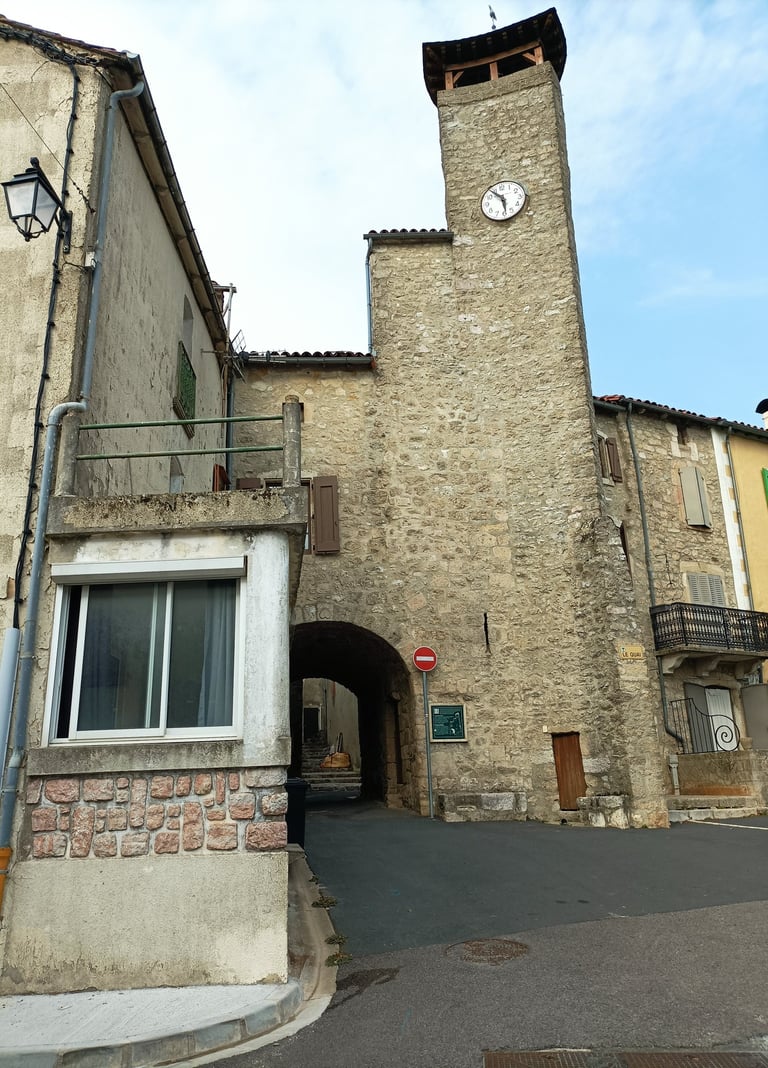


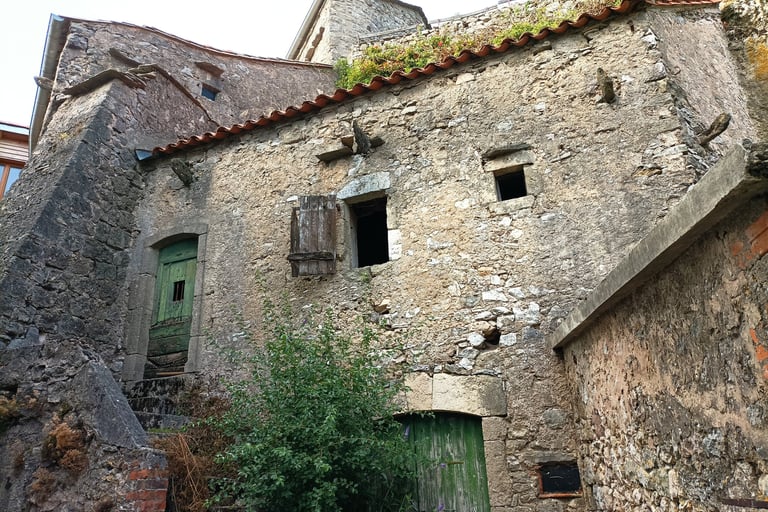

But I am puzzled. Despite its rundown air, a lot of money has clearly been spent in developing the tourist infrastructure of the village . A series of carefully built , paved staircases lead visitors towards RocCastel , high above the village, while carefully designed notices have been created to illustrate the various features along the way.
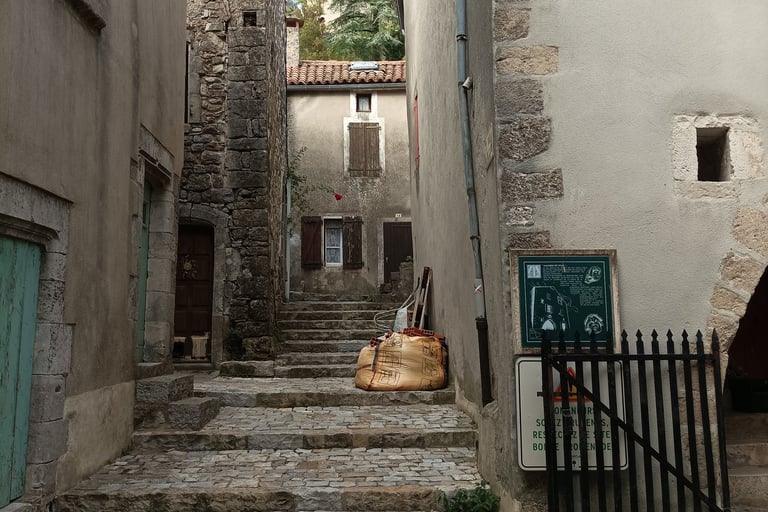

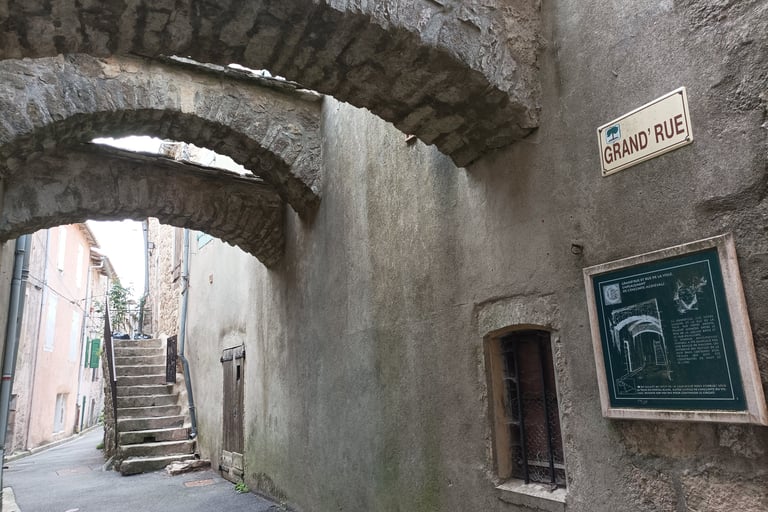

But where are the tourists? The streets seem empty , and yet a large warning sign ahead of us would indicate that that is not always the case. Do we really need to be warned to respect the site? Could it be that the cliffs above us are potentially dangerous, or is there something else afoot.
I ask myself what might have happened in the past.
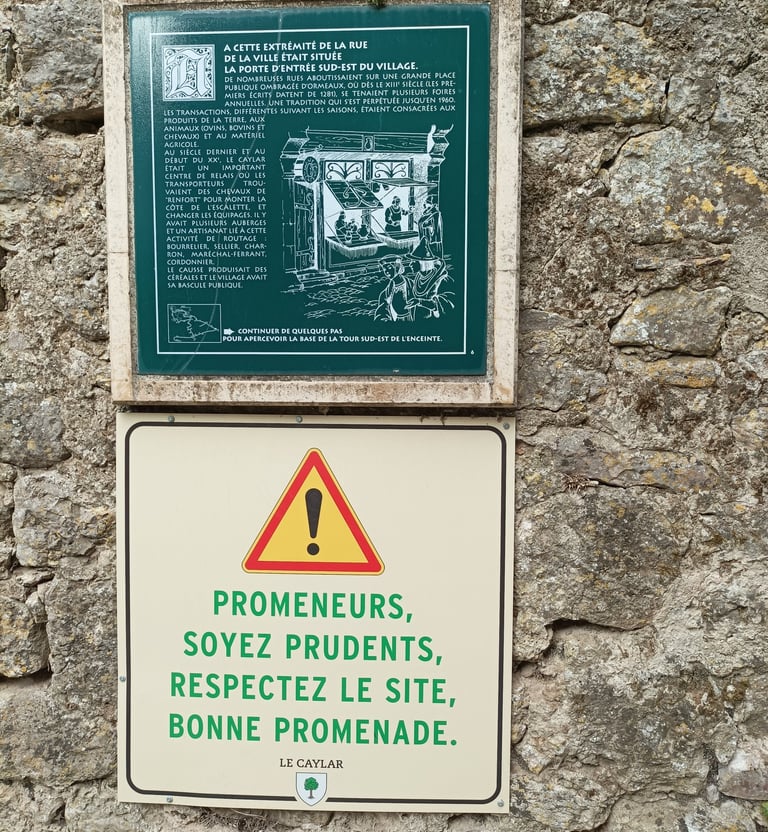

Our destination lies at the end of the Rue de Ville. It is the X1X century Eglise St Martin, where I hope to see what has been called a remarkable bande dessinée. (Spoiler alert: this does not feature Tintin or even Asterix the Gaul, but a much older more traditional story.) But what is this ? The doors stand firmly locked , which is something I have never experienced before when visiting churches in France.

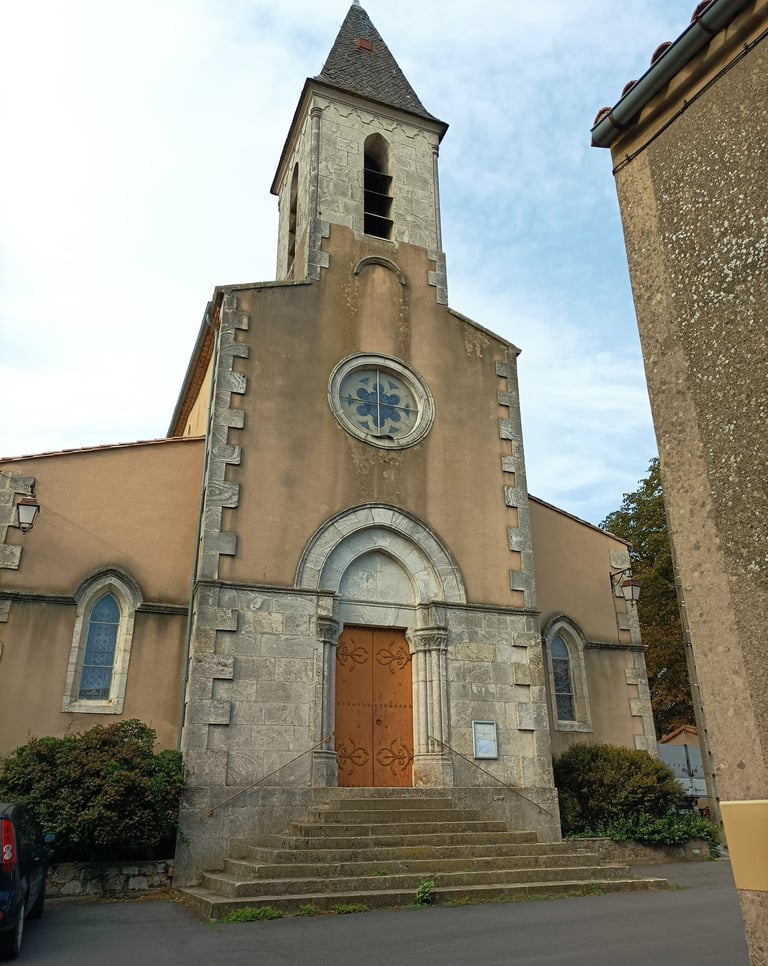
The mystery was solved as we were walking back towards the Tour d'Horloge. We became engaged in conversation with an elderly local man whom we had greeted earlier as he sat on a bench. "Is the church always locked?" we asked him. His answer was long and complex, but from the way he shook his head and talked of a woman who had to guard the key, we gathered that all was not well. It appears that many tourists do not comport themselves well in the church. There was even mention of the word 'chier' which I hesitate to translate. Suffice it to say such behaviour verges on the 'incroyable.' Where could such visitors come from? As for our potential church visit, we shall have to postpone it, and consult the mairie before we come. Watch this space.
Before we left , we decided to explore a little further and follow the path to RocCastel, that towers above the village. From the top, we looked out over two completely different worlds. To our left lay the old village, while to the right the A75 motorway snaked its way south, with a large service area alongside. A little further on lies the new tunnel, completed in 1994 to bypass the precipitous Pas d'Escalette, and lead traffic from the Larzac Plateau to the Mediterranean Sea. The service area provides work for local people in its petrol station, cafés and restaurants. It is a very different world from the sleepy old village we had just left, but one that brings strangers in its midst. I suspect that this is what leads to warning signs and locked churches.
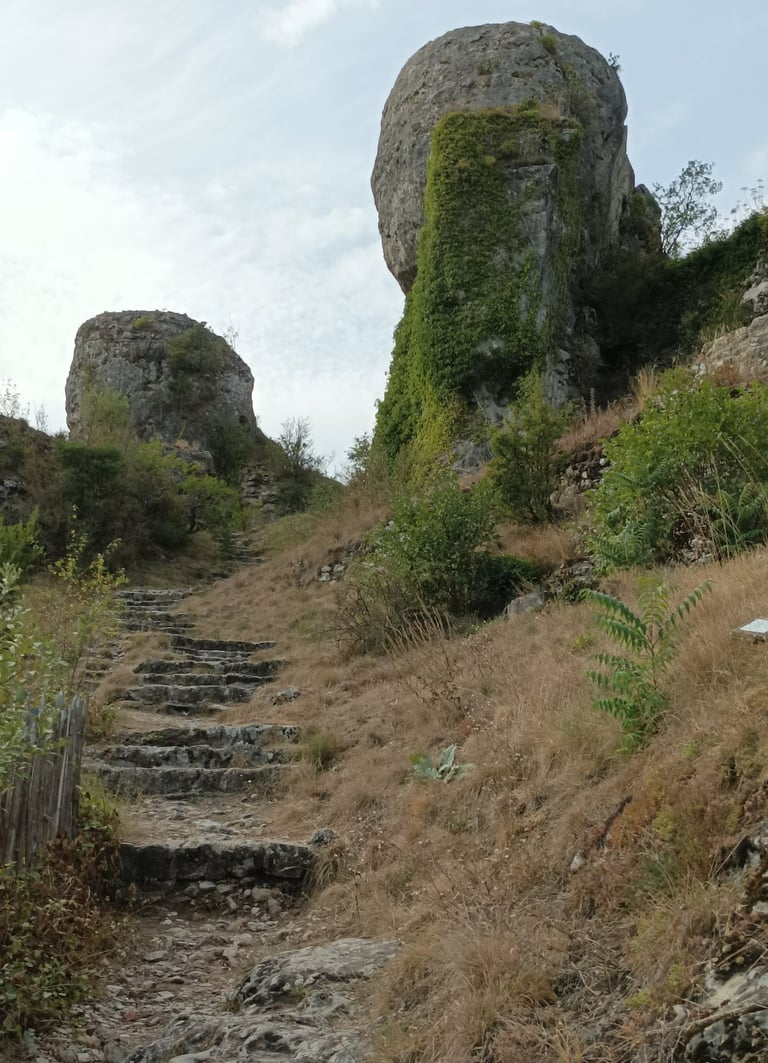

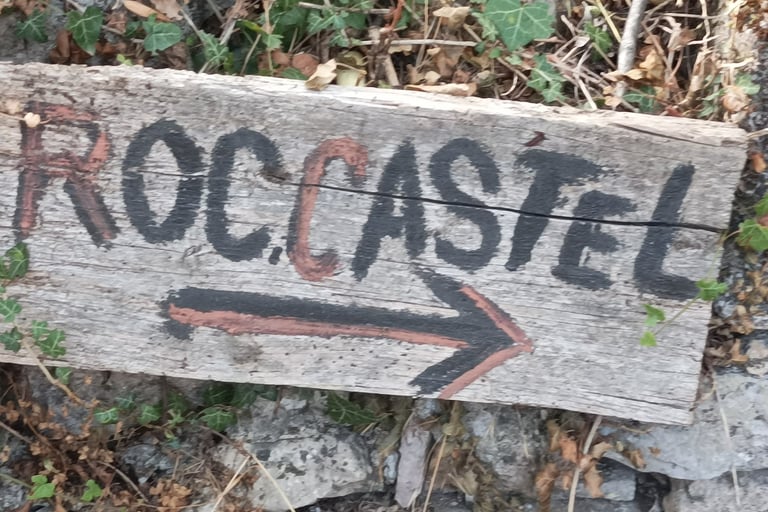

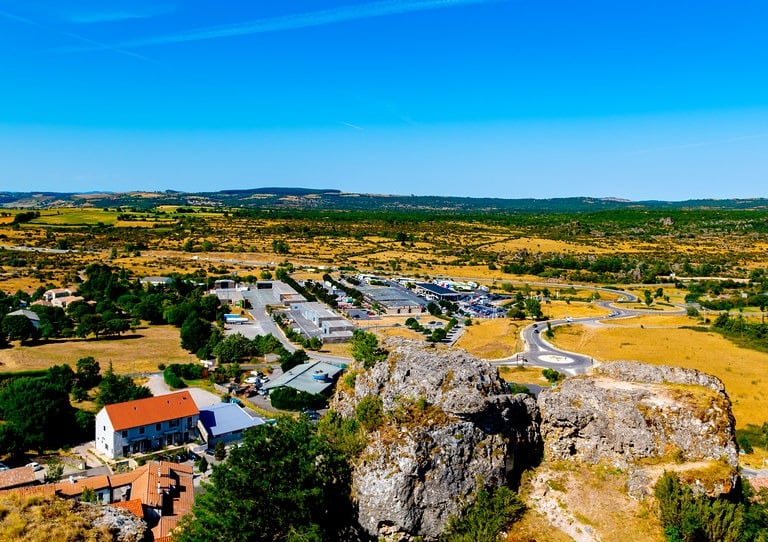

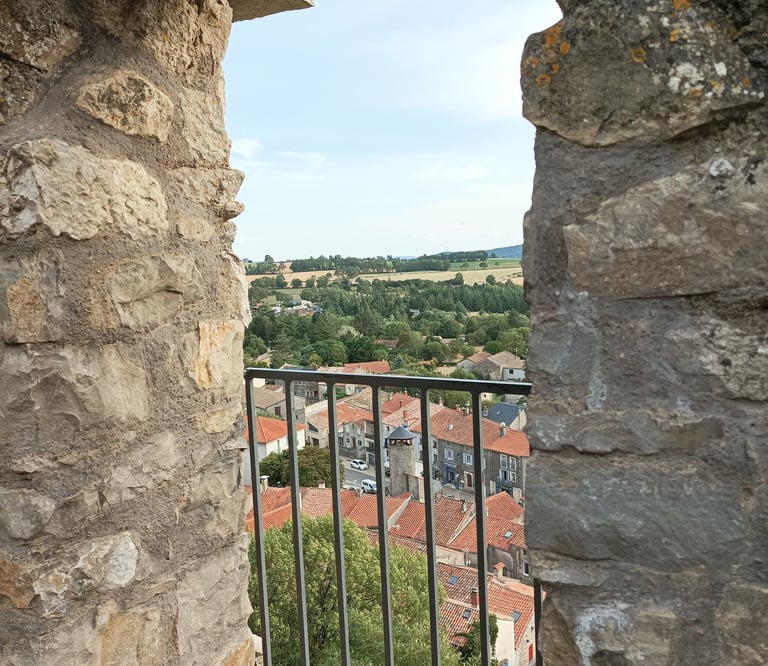

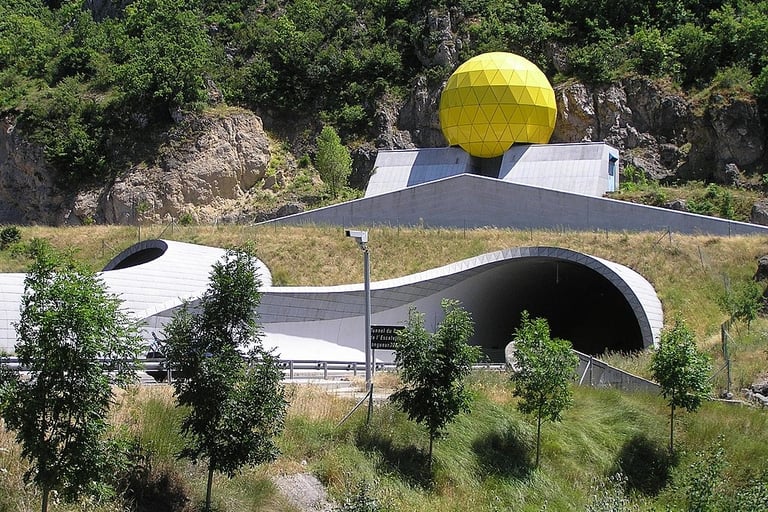

Two very different worlds indeed

